There is something to be said for ink. For the crisp edges of printed pages and the faint aroma of the glue that binds them together. And what of wrinkled spines, hand-blotted illustrations, and the distinctive signatures that bestow 'one-of-one' status? Seventies-born Printed Matter maintains a reverence for these halcyon features of books—physical, rare, art books—in all their glory and detritus. At the widely adored NY Art Book Fair (NYABF), happening in Chelsea from April 25-28, the zine lives on.
It’s an event sure to pang in the heart of any art-minded 20-something and up who might be concerned about the screenagers, a rare modicum of hope. Sure, devices are sinister and pervasive, the culture is web-addled and dully docile, but take comfort—there is still a vibrant community of librarians, curators, critics, and lifelong connoisseurs whose breath and bread lies in rare and out-of-print-books, fashion periodicals, and ephemera of this and that subculture. As NYABF kicks off, meet four of these seasoned collectors, whose crowded shelves are works of art in their own right.
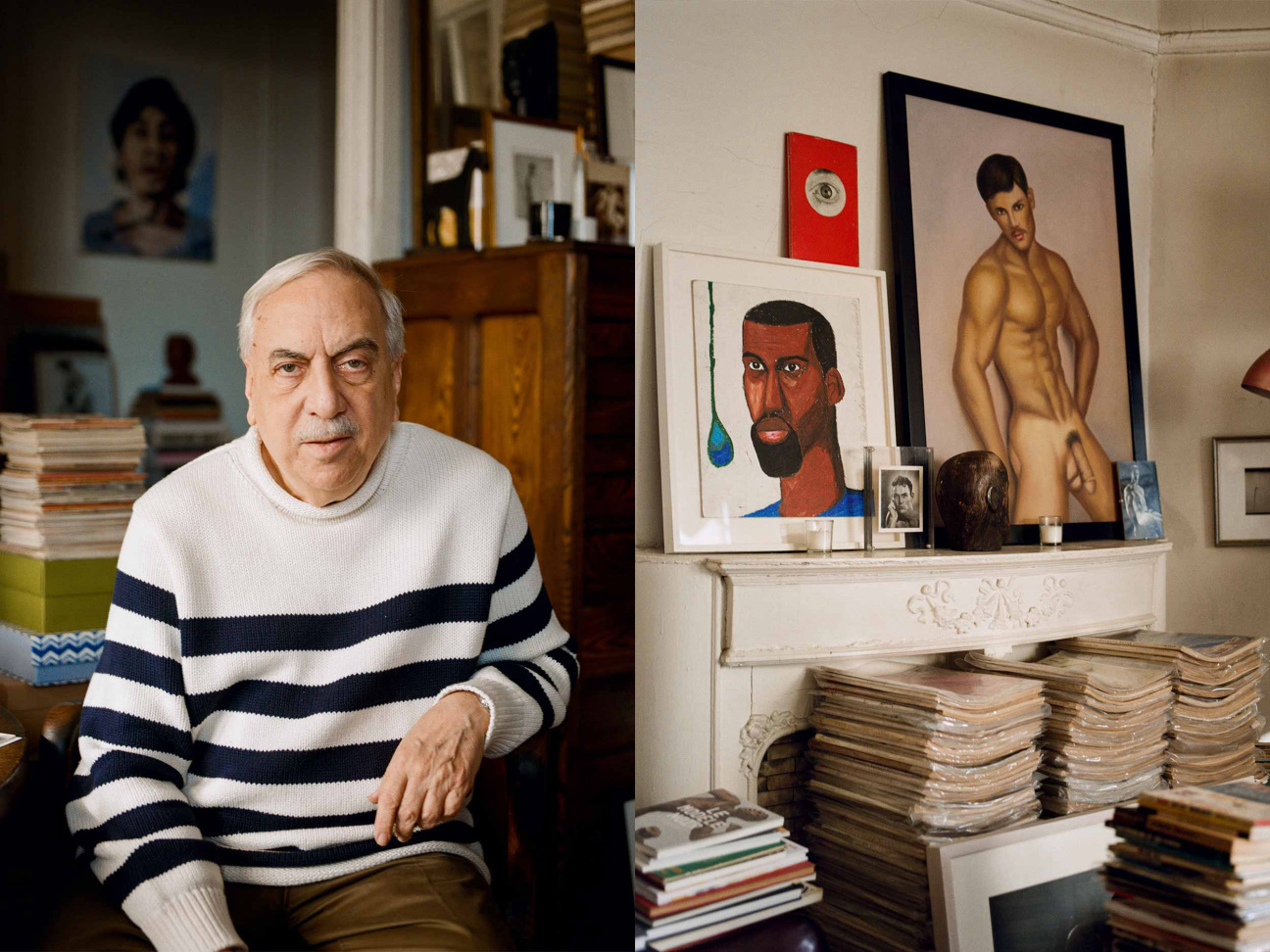
Vince Aletti
Aletti owns every copy of Vogue printed since 1930. His East Village dwelling is more “Library of Babel” than apartment, housing over 10,000 neatly arranged books and zines. A longtime contributor to both The Village Voice and The New Yorker, Aletti can be counted as one of the most prominent denizens of the fine art photography scene.
Can you describe the first art book fair you attended, and what has been your most impactful purchase thus far?
I've been at all the fairs from the beginning, but the most memorable have been the ones out at PS1, which I still miss. All the old classroom space out there felt endless and full of possibilities. I always came away with more books than I could comfortably carry home on the subway. I'm not going to try to single out the most "impactful," but I know that PS1 is where I saw the first issues of Jack Pierson's Tomorrow's Man and I could always depend on finding Dale Wittig, from San Francisco, in the indie section with handmade zines and his great paintings on playing cards. (Wittig returns every year.)
How did your collection begin?
My photobook collection began with a run of hardback US Camera Annuals from the 1940s and '50s that my father left me. It was years before I was able to afford copies of Robert Frank's The Americans or Richard Avedon's Observations and Nothing Personal or Irving Penn's Moments Preserved and Worlds in a Small Room, but they became the core of a collection that I can't even begin to count.
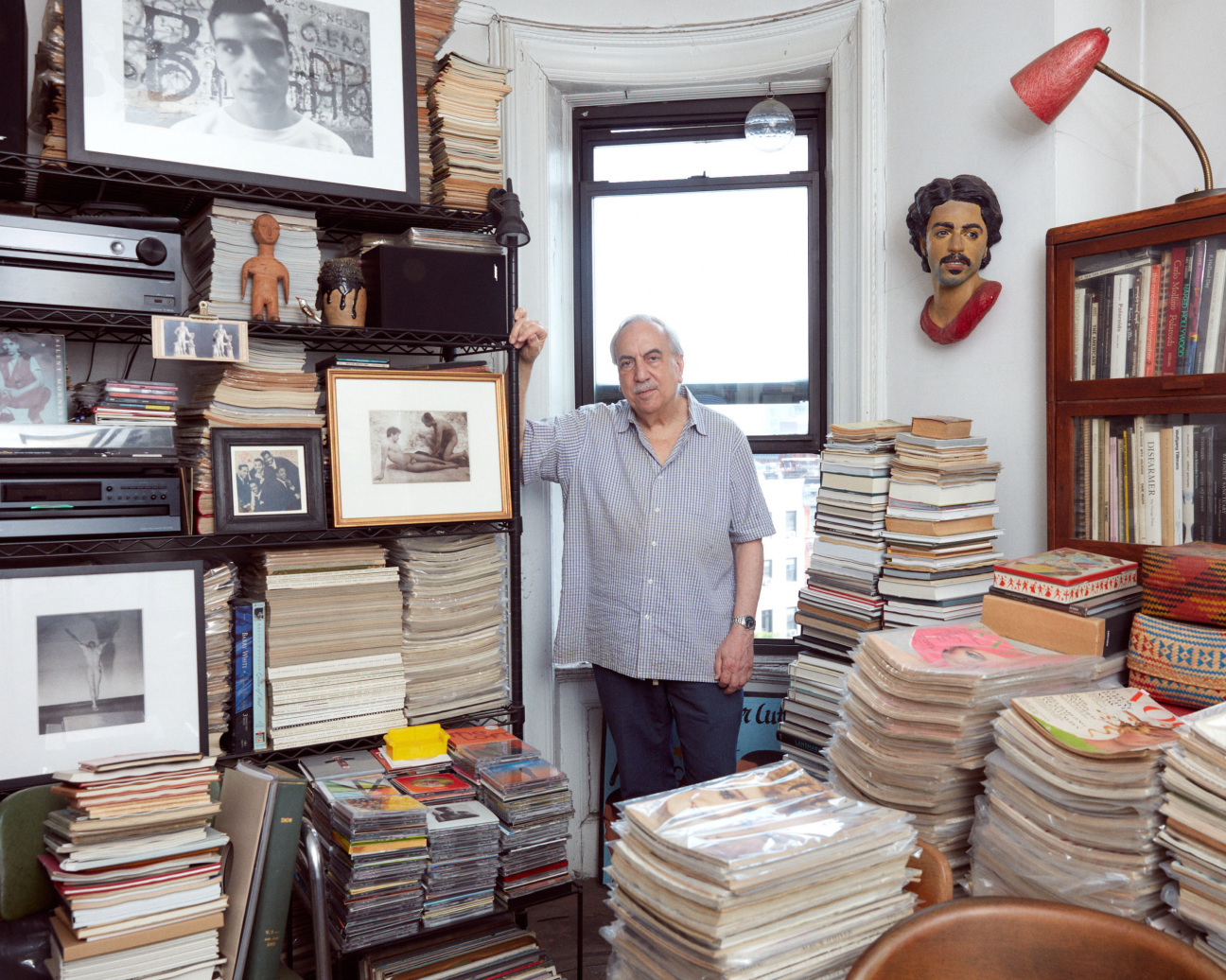
In the digital age, what keeps you returning to print, and what do you think sets it apart?
The physical book, like the actual photograph, is an object with weight, age, size, and texture. All of that is missing from a digital version, which is just pictures on a screen. I only look at photographs online if I need a reference or a reminder. They're no substitute for the real thing; they're information, not art—or at least not the art I value.
What author or imprint are you currently most excited about?
This is an impossible question. I can't choose one photographer or imprint without ignoring so many important and valuable others. I'm going to sidestep it by choosing Peter Hujar's Portraits in Life and Death, published in 1976 and the only book Hujar made in his lifetime. The contents of that book are currently on view in Venice, anticipating its reprint later this year. I'm one of those portraits, but the overall portrait is Peter's and it's become more resonant and soulful with time.
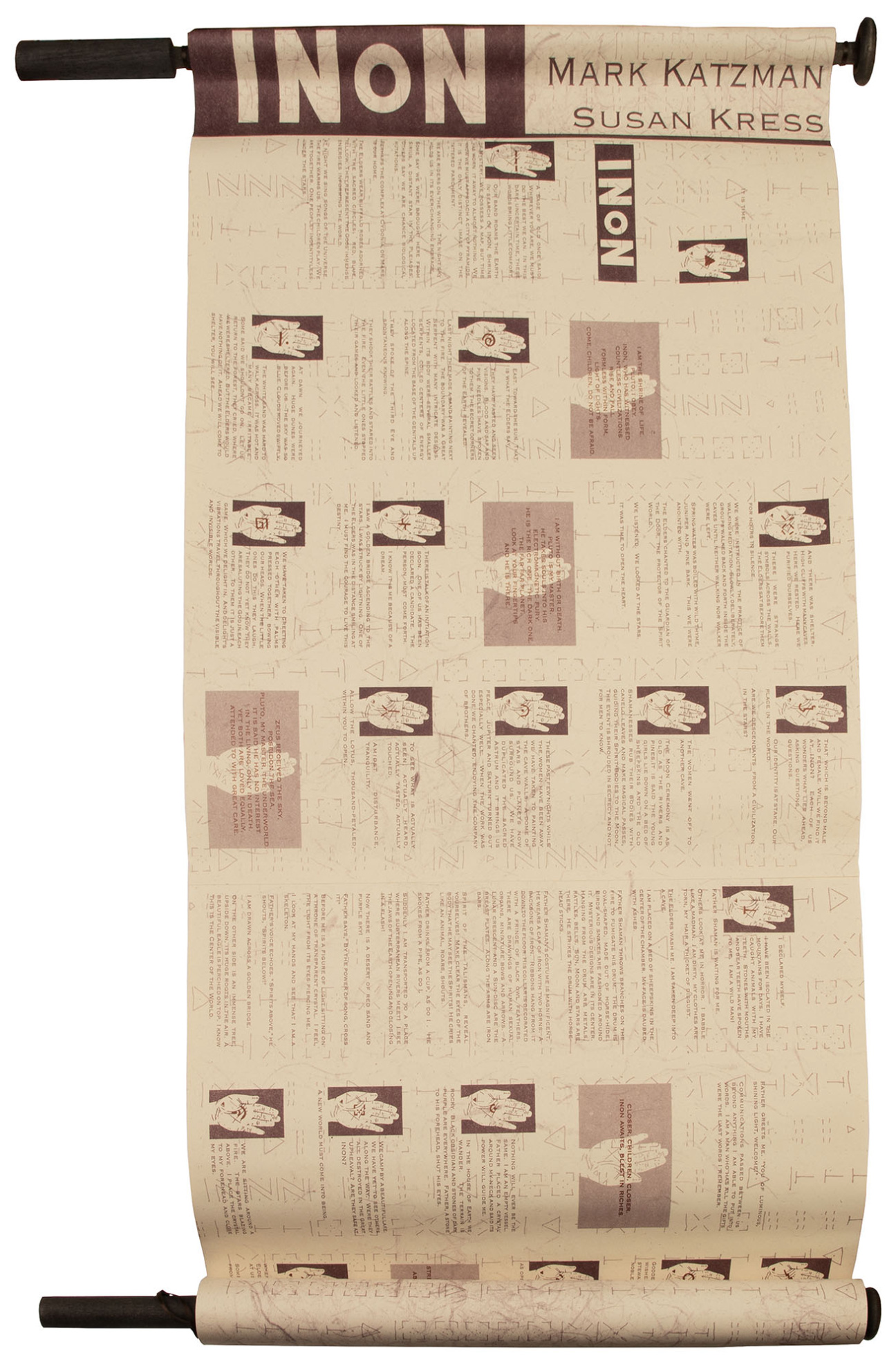
Deirdre Lawrence
The Principal Librarian at the Brooklyn Museum from 1983 to 2017, Lawrence has truly made a life in books, and specializes in rare and out-of-print materials. In addition to establishing the Museum Archives and online catalog while there, she has curated exhibitions on Walt Whitman and artists' books, among other topics, at a variety of institutions and served as a visiting professor at Pratt’s School of Information and Library Science.
Can you describe the first art book fair you attended, and what has been your most impactful purchase thus far?
I attended the first New York Artists Book Fair back in 2006 held in the grand building owned by Dia located at 548 West 22nd Street in Chelsea. The first fair, followed by many I have attended since, had a wonderful energy resulting from the folks who were presenting a rich range of works, as well as the attendees including artists, collectors, curators, librarians and others interested in the art of the book, which grew each year as the fair has continued.
At that time, I was the principal librarian at the Brooklyn Museum where we were collecting mostly multiples, with some limited edition and unique works. Brooklyn's collection was started in 1970 and was fostered with grants received from Printed Matter through the generosity of Sol and Carol LeWitt and the J. M. Kaplan Fund. Difficult to choose the most impactful purchase from Printed Matter as many were made including Susan King's Women and Cars, 1983, Warren Lehrer and Dennis Bernstein's French Fries, 1984, and MIM by Telfer Stokes and Helen Douglas, 1986.
How did your collection begin?
While at the Brooklyn Museum, I continued to build the artists' book collection there and would occasionally purchase one item for my personal collection that I found compelling as it would speak to my own collecting interests. After I retired from the museum in 2017, I continued to build my own book collection with a focus on artists' books, many of which are now on view at the Grolier Club, and in the virtual exhibition.

In the digital age, what keeps you returning to print, and what do you think sets it apart?
I have curated several exhibitions that have presented artists' books and the public response to each has provided clear evidence that print is alive and well alongside their digital neighbors. Each exhibition has drawn lots of people who are interested in new (and old) print editions as they offer innovative paper, typography, binding, and content. I have tried to include examples of books that the public can physically experience in each exhibition so that the intentions of the artist/designer/publisher can be examined outside of a locked case.
What author or imprint are you currently most excited about?
I am very interested in history and language and have purchased many books that speak to both topics. Here is a book that excites me for its intellectual content and design that I acquired from Printed Matter: When Eye Land by Star Feliz published by Printed Matter in 2023. There are lots of great books by artists, authors, and publishers working internationally, and I look forward to seeing and hearing about more at the Printed Matter Fair and at the Contemporary Artists Book Conference presented by the Center for Book Arts.
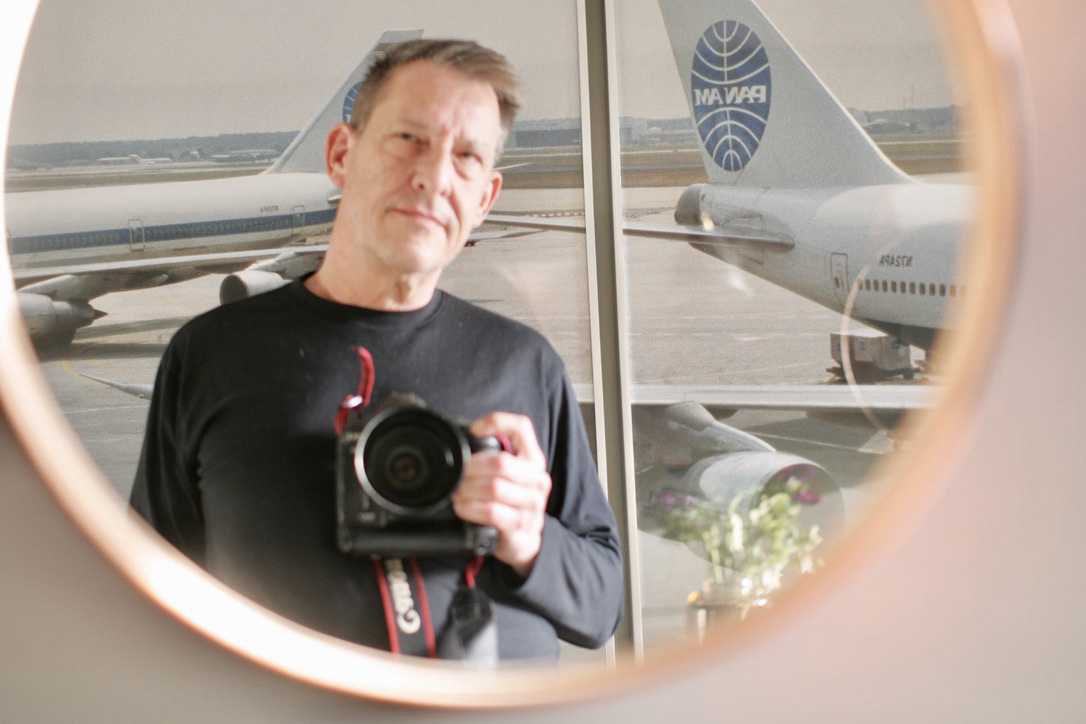
Mark Ghuneim
Ghuneim was a big-time player in the turn of the century music industry, holding executive posts at Columbia Records and Sony Music, helping to usher digital technology into the long-standing institutions. Since then, he has turned his focus to curation, as well as advocating for online information security. Outside of these pursuits, Ghuneim has maintained a consistent collecting practice, often seeking out work that touches upon the daunting themes that occupy his working hours.
Can you describe the first art book fair you attended, and what has been your most impactful purchase thus far?
2009 is the first I can remember well; there may have been an earlier visit but I know for sure as I kept all the fair posters. 2014, 2017 and the LA ones were seminal as book fairs go. Last year's torrent of rain on opening night was quite something.
The most impactful acquisition is not singular. For me, [it's] the many editions that were released over the years that I live with each day. As I type this an Alex Da Corte sculpture is across from me on a bookcase—beautiful, bright and brings me daily joy. I am still working my way through the EVZF 2023 Temporary Tattoos.
How did your collection begin?
I always collected the ephemera, zines and publications that surrounded my life and were personal to me. Works on paper that broke new cultural, social or emotional ground or were a by-product of IRL experiences. I started focusing on artist books when I took my first job in Midtown at a large corporation. I made a rule to make sure my creative self was not compromised crossing Uptown past 14th Street—I would acquire an artist book for each month that I did.
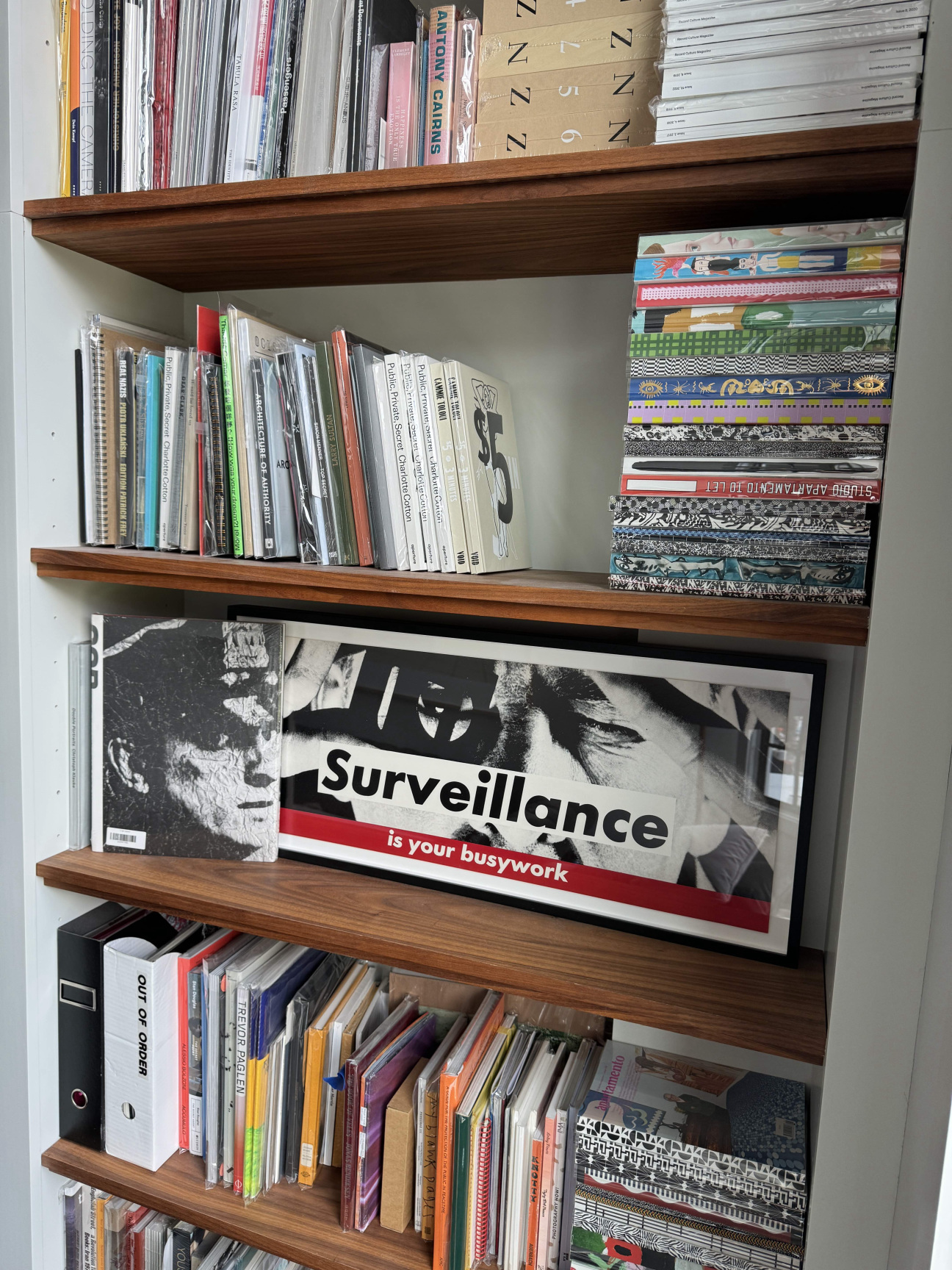
In the digital age, what keeps you returning to print, and what do you think sets it apart?
If it’s not in print, it does not exist.
What author or imprint are you currently most excited about?
Aaron Krach publications, Black Mass and Innen zines, ROMA, Spector Books, Sessions Press, the fun stuff RVB Books puts out, publishers that do serialized works like One Picture Book, Useful Photography, TBW Books, etc. The wonderful books and zines David Strettel has been publishing out of Dashwood. The list is long, there is so much incredible stuff coming out. I am focused on works across all publishers that illustrate the great shifts taking place in society and documentation that surfaces the obsolescence and its impact on humanity. That and anything authentic and sexy.

Barbara Moore
Director of the Peter Moore Photography Archive and the first editor at Dick Higgins’s legendary Something Else Press, Moore’s collection spans many offshoots of art history. Despite its size and scope, she still regards herself less as a collector and more as an "accumulator" of the ephemera of her far-reaching career.
Can you describe the first art book fair you attended, and what has been your most impactful purchase thus far?
From 1976 to 2004, I was a rare-book dealer specializing in late 20th-century avant-gardes, so starting with Printed Matter's original book fair that was a collaboration with a print fair (late-1970s or early '80s). I had a table or booth.
How did your collection begin?
I'm more an accumulator than a collector and have been involved as a writer and historian with alternative artistic strategies my whole adult life.
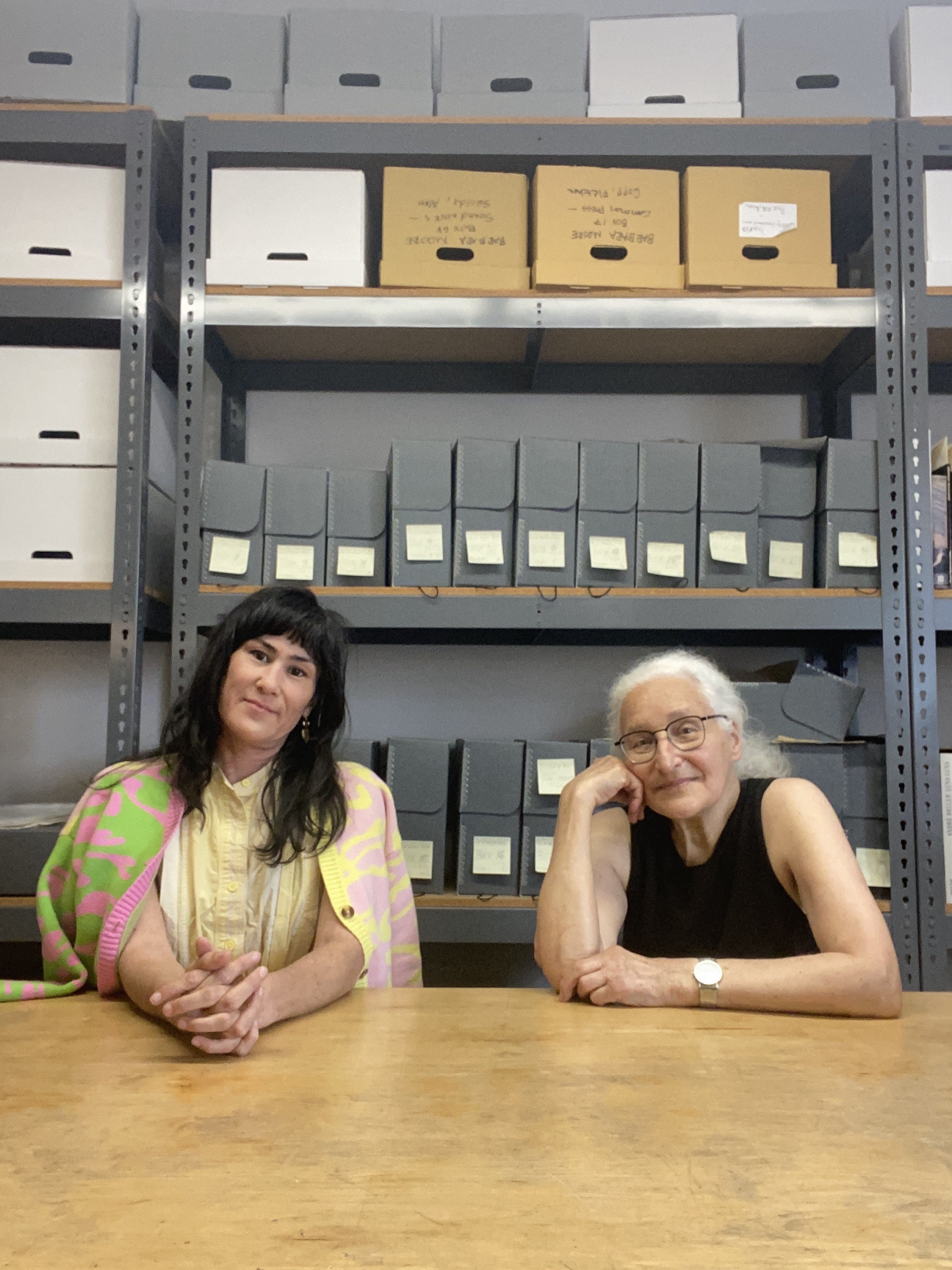
In the digital age, what keeps you returning to print, and what do you think sets it apart?
Anything that embodies realness is relief from the flat sameness of screens.
What author or imprint are you currently most excited about?
I've loved witnessing the acceptance of artists' bookmaking into the wider culture and expansion into new forms such as zines. It thrills me that Printed Matter, an institution formed somewhat organically out of the cultural ferment of the 1970s, is thriving without having become corporate and sacrificing a certain scrappiness.










 in your life?
in your life?

